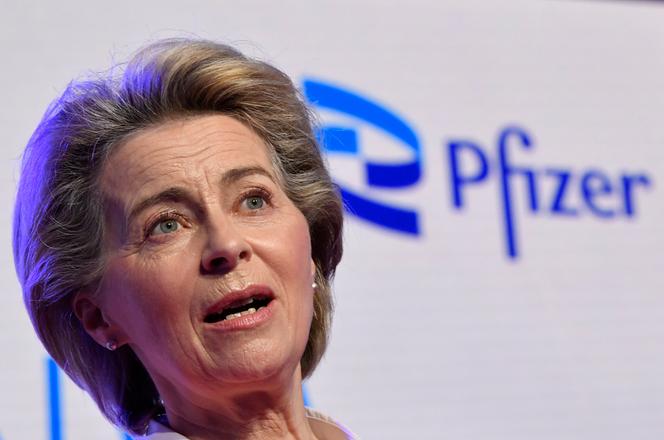


A top court ruled, on Wednesday, May 14, that the European Commission had failed to show transparency by declining to release text messages sent by Commission President Ursula von der Leyen to the head of Pfizer as the bloc tried to secure Covid vaccines. Siding with The New York Times, which brought the case, the Court of Justice of the European Union (CJEU) said the commission did not give "plausible" explanations as to why it did not hand over the texts to the American daily newspaper. The ruling is a blow to von der Leyen, and gives credence to critics who have accused her of centralized and opaque decision-making.
The case centered on elusive message exchanges between von der Leyen and Albert Bourla, chief executive of Pfizer – which the EU chose as its main vaccine supplier at the height of the pandemic. In a sharp rebuke of the EU commission, the bloc's top leadership body, the Luxembourg-based court wrote that "The Commission cannot merely state that it does not hold the requested documents." It "failed to explain in a plausible manner why it considered that the text messages exchanged in the context of the procurement of Covid-19 vaccines did not contain important information," the court added in a statement.
The New York Times, which revealed the existence of the messages, sued the commission in 2023 after Brussels declined to produce them following a freedom of information request. The commission argued that it could not find the texts because they had not been recorded and archived – something it says is done only when the content is deemed "substantive." "The commission never denied the existence of text message exchanges," an EU official said ahead of the verdict. "What it was argued (...) is that these exchanges did not contain important information."
However, this reasoning was rebuffed by the lower chamber of the CJEU, which chastised the EU body for not having explained what searches it carried out to find the documents, and why it no longer had them. "The Commission has not sufficiently clarified whether the requested text messages were deleted and, if so, whether the deletion was done deliberately or automatically or whether the President's mobile phone had been replaced in the meantime," it said.
The verdict, which can be appealed, quashes the EU commission's decision not to hand over the messages and reminds it of its duty to respond to The New York Times' request. However, given the uncertainty around whether the messages have been deleted or not, what happens next is not particularly clear.
The EU had moved swiftly after the Covid-19 pandemic emerged in 2020, aiming to secure vaccines for member countries to buy for their citizens and residents at a time of massive global demand for the shots. However, many aspects of the EU's procurement from Pfizer have been kept confidential, leading to claims of a lack of transparency – and several lawsuits in Belgium and with EU courts.
"This case presents a very important issue: whether officials may evade public transparency by communicating via text messages rather than more traditional means," a lawyer for The New York Times, Bondine Kloostra, said in her opening arguments in November.
Lawyers for the 27-nation bloc argued that the private messages did not constitute part of the vaccine negotiation. They might have involved side issues, such as von der Leyen and Bourla agreeing to speak on a certain day, at a certain time, they suggested.
Earlier this week, an EU official argued that commission workers, including the body's president, do not have an obligation to record all their emails, texts and instant messaging chats, as this would be "materially impossible."
The commission's lawyer, Paolo Stancanelli, said, in November, that its services had asked for the messages to be tracked down after The New York Times reached out to von der Leyen's cabinet, which replied that it was unable to find them. However, in January 2022, the EU's ombudsman had already described this as "maladministration," saying the messages should have been subject to the EU's public transparency rules for official documents.
